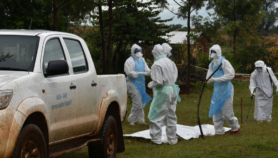By: Sharon Davis
Send to a friend
The details you provide on this page will not be used to send unsolicited email, and will not be sold to a 3rd party. See privacy policy.
Without new interventions, cases of extensively drug-resistant tuberculosis (XDR-TB) in rural South Africa will increase dramatically over the next five years, according to a study.
The research was published last week (27 October) in The Lancet.
The study, which modelled the effect of various infection control measures on the spread of XDR-TB in the rural community of Tugela Ferry in KwaZulu-Natal, South Africa, suggests that infection rates will increase from 194 cases in 2007 to an estimated average of 234 cases a year by 2012.
Multidrug-resistant TB will also increase from 352 cases in 2007 to 425 a year over the same period.
They estimate that 72–96 per cent of all new XDR-TB cases in Tugela Ferry will occur in people infected with HIV.
The scientists claim that more than half the airborne infections of XDR-TB — tuberculosis that is resistant to both first-line and specific second-line drugs — would occur within hospitals.
The study suggests that a combination of controls — including using masks, reducing hospitalisation time, improving ventilation and rapid drug resistance testing — could avert almost half the predicted XDR-TB cases by 2012 at Tugela Ferry and at similar resource-limited hospitals around the country.
"I think South Africans have already been alarmed and galvanised by the initial identification of XDR-TB. What this report does is provide some hope that simple, low-cost strategies are available to help control this situation," Sanay Basu, one of the principal investigators, told SciDev.Net.
"The key is to change the environment of TB care," he says.
Basu adds that getting people onto outpatient therapy as soon as possible, using individual patient rooms, ventilating rooms with open doors and windows, hospital staff wearing masks, and rapid drug susceptibility testing methods are priorities that have been used in many other resource-limited settings.













